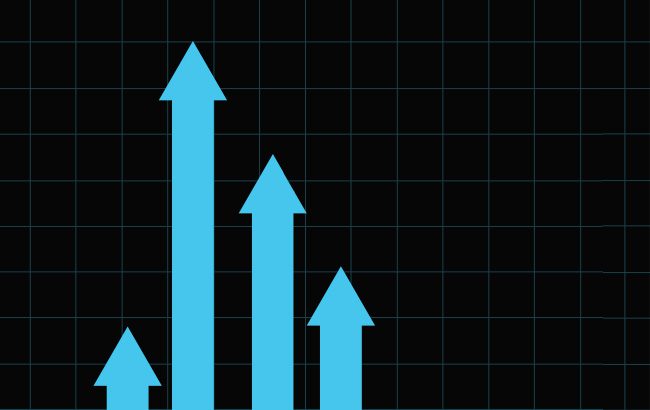In demand: the growth of the global alcohol market
The past few years have been difficult for spirits brands, but in many categories, and in various territories, growth is looming.

There’s a lot to wrap your head around when you recall the various geopolitical storms the spirits industry has had to weather over the past few years.
These include tariff wars between the US, the EU, and China; Brexit; closed borders during the Covid-19 pandemic; shuttered on-trade businesses also driven by Covid-19 regulations; the Russia-Ukraine war – and more.
The hangover from a number of these issues is still being felt in the spirits sector – but in the face of a challenging political and economic landscape, the past 12-18 months have signalled a period of rebounding for the trade.
Today, the global total beverage alcohol market is on an axis swing, as times and trends are changing.
“As geopolitical and economic turbulence impacts the market, alcohol drinkers are shifting their consumption behaviours,” noted Mark Meek, CEO, IWSR Drinks Market Analysis.
“The key trends that have underpinned the industry, such as premiumisation, will evolve as consumers respond to the increased cost-of-living crisis. The industry will, however, deliver pockets of significant value growth.”
The latest data from IWSR Drinks Market Analysis shows global beverage alcohol growth by volume slowed to around 1% in 2022, “and is likely to grow at around 1% per annum over the next five years” to 2027, Emily Neill, chief operations officer, research and operations at IWSR Drinks Market Analysis, said during a webinar on the company’s latest insights. “Value is forecast to grow by a more positive 2% year on year.”
Looking at individual alcohol segments, beer had a buoyant 2022, growing by 3% compared with 2021.
Wine had a more taxing 12 months, as its “structural decline” continued, with a 5% drop in volume sales. For spirits, the category’s performance was mixed. Taking all spirits into account – including national ones such as baijiu, shochu, arrack, and soju – global spirits volume consumption dropped by 2% in 2022 compared with 2021.
However, excluding national spirits, the global spirits category grew by 5% in volume, driven by whisky (8% volume growth 2021-2022), rum (up by 9%), and brandy (up by 6%).
This offset a double-digit decline for Cognac (down by 10%) due to volume drops in its two key markets: the US and China. The latter is an interesting, if not disappointing, change of pace for Cognac in these markets – one that is unfortunately echoed across the wider spirits industry, according to IWSR’s latest intel.
“If we look at the key growth markets for total beverage alcohol last year, what you see for China and the US, is we had significant volume drops last year – and actually, a more subdued and slightly negative outlook over the next five years in volume terms,” Neill explained.

Driving growth
IWSR believes India, Mexico and Brazil will take over from the US and China as volume-growth drivers.
“In volume terms last year, India and Mexico together accounted for over half of all volume growth, and I would expect it to grow over the next five year at quite a healthy rate,” Neill said, adding that Vietnam and South Africa were also “key growth markets” last year.
In India, for example, IWSR is seeing significant up-trading in the Indian whisky category, and from Indian whisky into Scotch and other whisky styles.
Premium Indian whisky sales will have grown sixfold between 2019 and 2027, IWSR noted.
Meanwhile, volume growth for whisky was up by 2% in the US, following substantial volume gains the previous year, confirming the ongoing demand for whisky across the country. It is forecast to continue to grow at a compound annual growth rate (CAGR) of 4% between 2022 and 2027.
While volume might be down in the US and China, value sales are strong, and are expected to continue from 2022 to 2027.
“In value terms we still expect significant growth, at US$12 billion in the US, and in China nearly US$42bn [US$41.7bn],” Neill added, backing the ongoing premiumisation trend.
The 11% growth in total spirits by value in 2022 is further evidence to support this optimistic outlook.
In the US, agave-based spirits are forecast to continue driving sales in the country. From 2021 to 2022, agave spirits grew by 12% in volume in the US (and 13% overall).
From 2022 to 2027, this will “remain pronounced at a volume CAGR of 9%”, IWSR predicts, while the category remains on track to overtake vodka as the spirits leader by value in the US in 2023. IWSR attributed this success to the celebrity influence on the category – but did note there are early signs of a slowdown in the premiumisation trend.
Other categories that have also found huge favour in recent years, notably the ready-to-drink (RTD) segment, are also experiencing a growth slowdown. What was historically a 20%-plus volume CAGR category from 2018 to 2021 slowed to 2% volume growth in 2022.
This can be traced to a sharp deceleration in the US, which included a 10% volume decline in hard seltzers. On a global scale, the RTD segment is expected to grow by 3% in volume CAGR between 2022 and 2027, so demand does remain.
However, non-alcoholic ‘spirits’ have been touted as a category to watch, with a growth trajectory of a 7% volume CAGR from 2022 to 2027, when it is forecast to account for 2% of the total global beverage alcohol market.
But as new trials and tribulations squeeze consumers’ incomes – the ongoing energy crisis and rising inflation, to name two causes – some habits from the days of the Covid-19 pandemic are likely to continue influencing their behaviours.
Take the UK, for example: IWSR noted a third of alcohol drinkers would rather treat themselves to a better-quality drink at home than go out, a trend exacerbated by the increased costs of socialising outside of the home.
Neill did note, however, that trends suggest consumers are remaining loyal to their favourite brands, despite the squeeze on disposable incomes.
“A key strategy [from consumers] is just buying their regular brand when it’s on promotion, or buying the same brand in a larger format, or a multi-pack,” she added. “People are sticking with their regular brand, which supports what we’re seeing with premiumisation – that it’s ongoing, just at a slower rate.”
Related news
Rye rejection: EU whisky meets labelling roadblock
